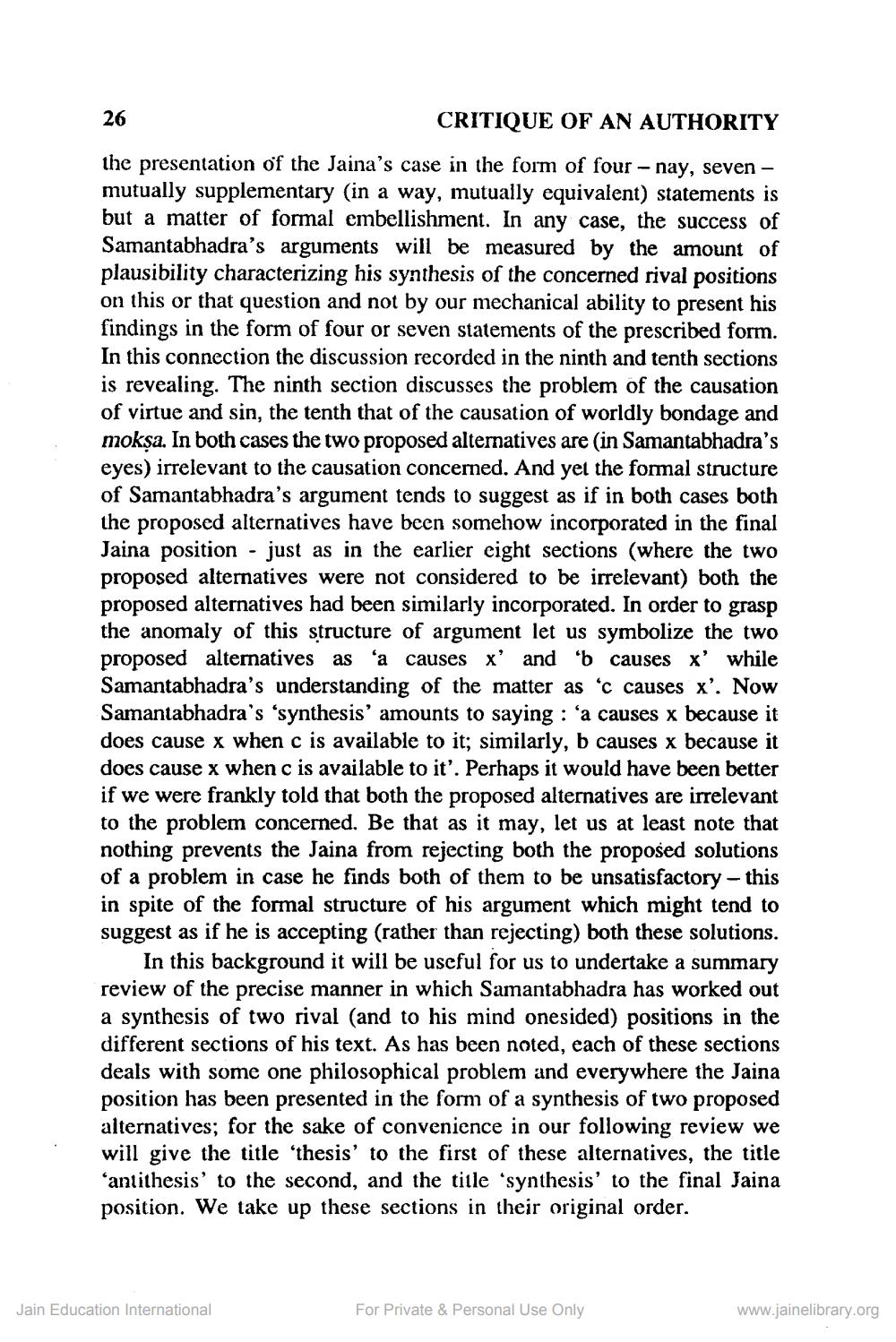________________
26
CRITIQUE OF AN AUTHORITY
the presentation of the Jaina's case in the form of four - nay, seven - mutually supplementary (in a way, mutually equivalent) statements is but a matter of formal embellishment. In any case, the success of Samantabhadra's arguments will be measured by the amount of plausibility characterizing his synthesis of the concerned rival positions on this or that question and not by our mechanical ability to present his findings in the form of four or seven statements of the prescribed form. In this connection the discussion recorded in the ninth and tenth sections is revealing. The ninth section discusses the problem of the causation of virtue and sin, the tenth that of the causation of worldly bondage and mokşa. In both cases the two proposed alternatives are (in Samantabhadra's eyes) irrelevant to the causation concerned. And yet the formal structure of Samantabhadra's argument tends to suggest as if in both cases both the proposed alternatives have been somehow incorporated in the final Jaina position - just as in the earlier eight sections (where the two proposed alternatives were not considered to be irrelevant) both the proposed alternatives had been similarly incorporated. In order to grasp the anomaly of this structure of argument let us symbolize the two proposed alternatives as a causes x' and 'b causes x' while Samantabhadra's understanding of the matter as 'c causes x'. Now Samantabhadra's 'synthesis' amounts to saying : 'a causes x because it does cause x when c is available to it; similarly, b causes x because it does cause x when c is available to it'. Perhaps it would have been better if we were frankly told that both the proposed alternatives are irrelevant to the problem concerned. Be that as it may, let us at least note that nothing prevents the Jaina from rejecting both the proposed solutions of a problem in case he finds both of them to be unsatisfactory - this in spite of the formal structure of his argument which might tend to suggest as if he is accepting (rather than rejecting) both these solutions.
In this background it will be useful for us to undertake a summary review of the precise manner in which Samantabhadra has worked out a synthesis of two rival (and to his mind onesided) positions in the different sections of his text. As has been noted, each of these sections deals with some one philosophical problem and everywhere the Jaina position has been presented in the form of a synthesis of two proposed alternatives; for the sake of convenience in our following review we will give the title 'thesis' to the first of these alternatives, the ti ‘antithesis' to the second, and the title 'synthesis' to the final Jaina position. We take up these sections in their original order.
Jain Education International
For Private & Personal Use Only
www.jainelibrary.org




